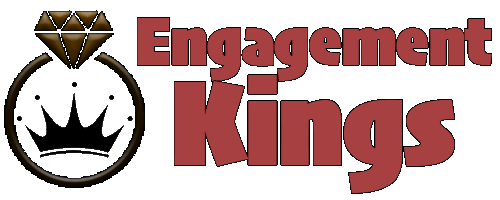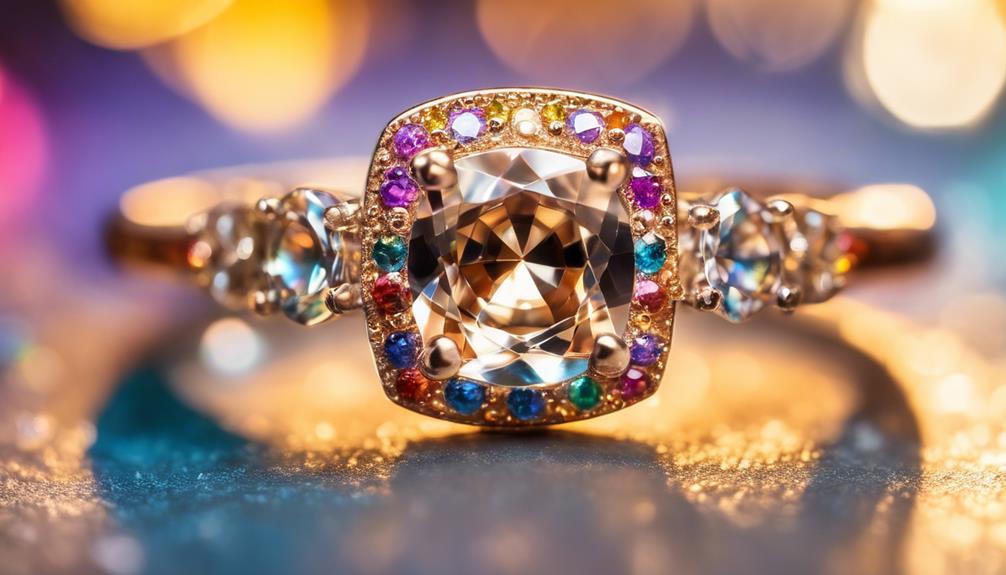When choosing the best color for an engagement ring, consider both diamond and metal. Near colorless diamonds (G-H) strike a perfect balance, offering stunning appearance and affordability. If you love modern styles, white gold or platinum settings enhance these diamonds’ brilliance, making them appear even more colorless. Yellow or rose gold adds warmth, complementing diamonds with slight color like those in the H-I range. Personal style plays a huge role, so match the metal to your aesthetic—classic, modern, or vintage. Consider the interplay of diamond size, metal choice, and color grades to craft an ideal ring. Discover what suits you best here.
Understanding Engagement Ring Metals
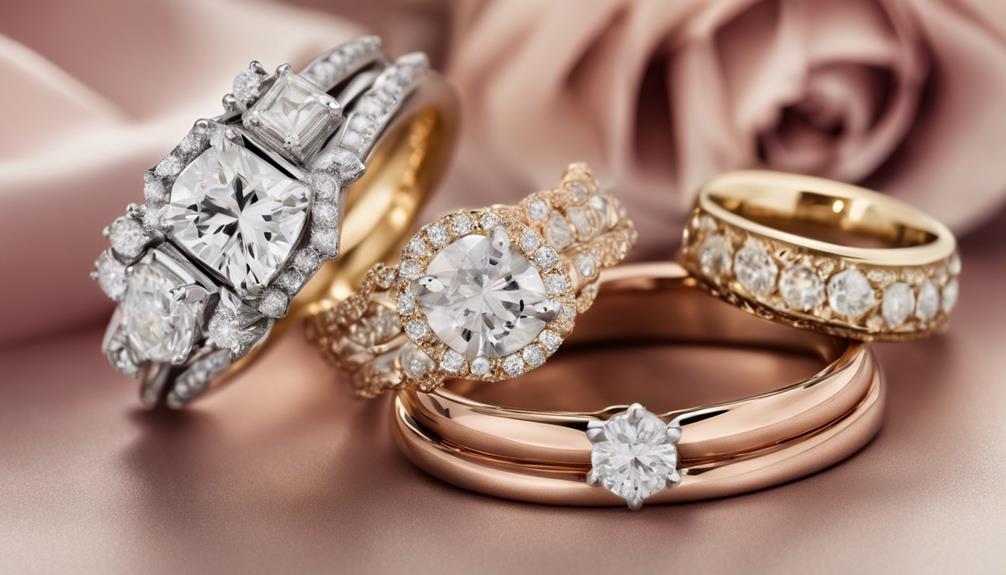
When you’re choosing an engagement ring, understanding the different metals available can considerably impact your decision. Each metal offers unique characteristics that can complement the style and aesthetic you’re aiming for.
Yellow gold is a timeless classic, exuding warmth and elegance. It’s perfect for vintage-inspired designs and pairs beautifully with warm diamond hues.
If you’re drawn to a modern and romantic vibe, rose gold might be your ideal choice. Its pinkish hue offers a unique aesthetic twist, setting your engagement ring apart.
White gold is a popular contemporary option that highlights a diamond’s brilliance. It complements colorless to near-colorless stones and offers a sleek, polished look. However, it requires periodic rhodium plating to maintain its shine.
On the other hand, platinum is celebrated for its durability and hypoallergenic properties, making it a practical choice if you have sensitive skin. It showcases diamonds beautifully, thanks to its natural white luster.
Analyzing Diamond Color Grades
Explore the world of diamond color grades to make an informed choice for your engagement ring. Understanding the diamond color scale is essential, as it ranges from D (colorless) to Z (noticeable color).
You’ll find that diamonds in the G-H color range fall into the near colorless category, offering a fantastic balance between cost and appearance. These near colorless diamonds often appear colorless to the naked eye, making them a popular choice for engagement rings.
When considering diamond grading, keep these points in mind:
- D-F Diamonds: They’re colorless, rare, and come with a higher price tag.
- G-H Diamonds: Near colorless and provide excellent value while appearing colorless in most settings.
- K-Z Diamonds: Have more noticeable color, usually showing yellow or brown hues.
- Larger Diamonds: May need a higher color grade to maintain a colorless appearance.
Choosing G-H color diamonds can be a smart move, especially if you’re aiming to balance beauty and budget. They allow you to have a stunning engagement ring without the hefty price of colorless diamonds, making them a versatile option for various styles and personal preferences.
Impact of Ring Settings
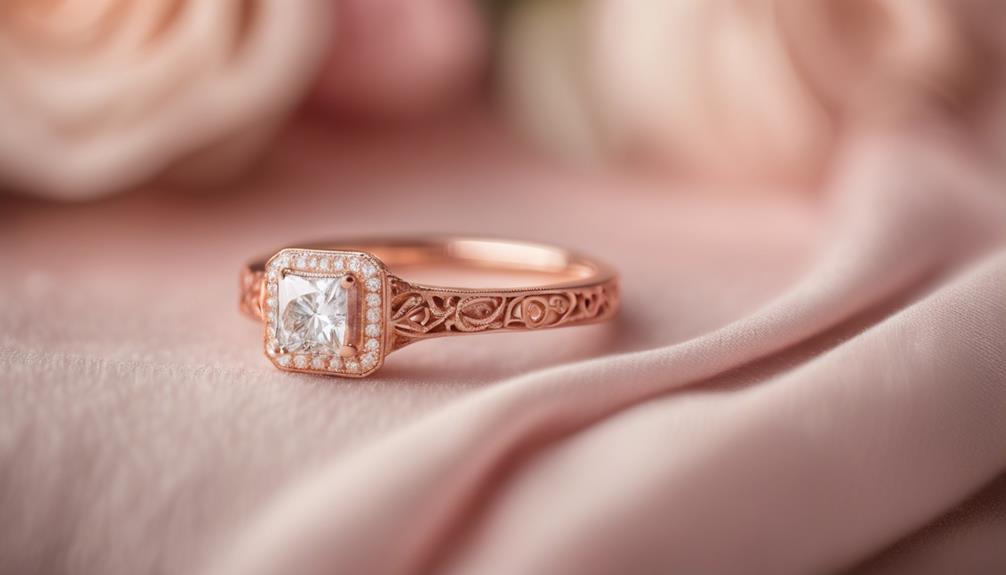
Understanding diamond color grades lays the groundwork for choosing the perfect engagement ring, but the setting can dramatically alter how you perceive that color. The choice of ring settings plays an essential role in enhancing or diminishing a diamond’s appearance.
If you’re considering a colorless diamond, white metals like platinum or white gold are your best allies. They enhance the brilliance and colorlessness of diamonds in the D-H grade range, making them appear even more pristine.
On the other hand, if your diamond has a slight yellow tint, a setting in yellow or rose gold can cleverly mask those warmer tones. This makes diamonds in the H or I grade look more harmonious with the metal surrounding them. The contrast between the diamond’s color and the setting’s metal can enhance the stone’s overall brilliance, making lower color grades appear more appealing.
The shape of your diamond also interacts with the setting, affecting color perception. Round brilliant cuts hide color better, while emerald cuts might reveal more color.
For intricate settings like pave, side-stone, or halo, diamonds graded G-I generally appear colorless against surrounding stones, enhancing the ring’s overall aesthetic.
Personal Style Considerations
Choosing the perfect engagement ring involves aligning it with your personal style, ensuring it reflects your unique aesthetic preferences.
When considering which diamond color and metal combination to choose, think about what truly resonates with you. Your choice shouldn’t only highlight your personality but also complement your daily fashion sense.
To guide your decision, consider these key aspects:
- Classic Elegance: If you’re drawn to timeless pieces, a yellow gold band with a traditional diamond color can beautifully showcase your long-term style.
- Modern Flair: For a contemporary look, consider white gold or platinum, which can enhance the diamond’s brilliance and suit a modern wardrobe.
- Vintage Charm: If vintage allure is your style, yellow gold paired with a warmer diamond shade might evoke the romanticism you love.
- Active Lifestyle: Choose a durable setting like platinum if your life demands resilience, ensuring your ring endures everyday adventures.
Choosing the Right Color
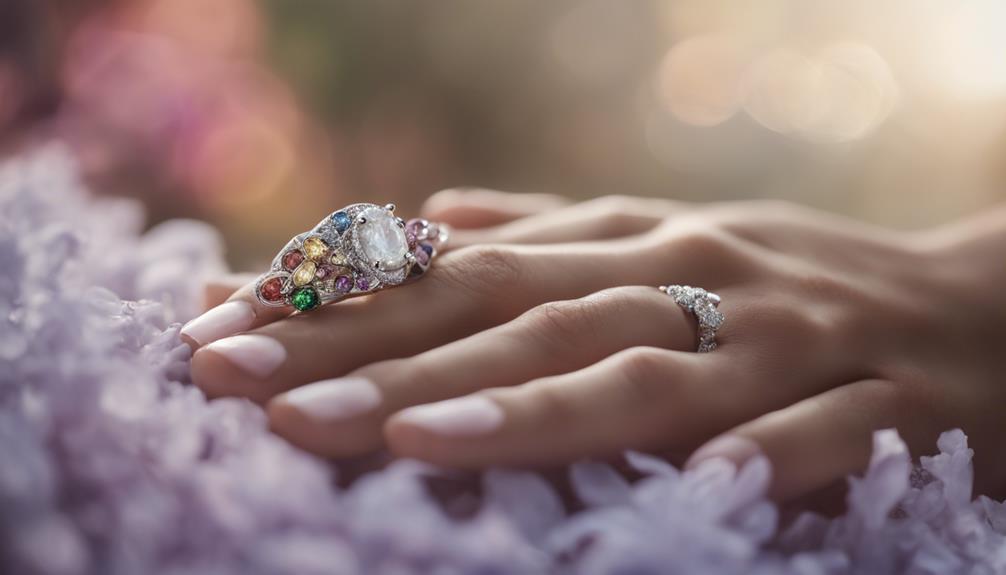
The allure of selecting the right color for your engagement ring lies in balancing aesthetic charm with practical considerations. You’ll want a diamond that not only looks stunning but also fits your budget.
Typically, the best diamond color grade falls within the near colorless range (G-H). These diamonds appear colorless to the naked eye and offer cost savings compared to the higher, more expensive D-F grades.
Consider how the metal setting influences the diamond’s appearance. A white gold setting can enhance the brilliance of near colorless or colorless diamonds, making them appear even more radiant.
On the other hand, a yellow gold setting can complement diamonds with slight color tints (I or J), providing a warm, cohesive look. This option allows you to opt for a larger stone without straining your budget.
Ultimately, your personal preferences are essential. Do you prefer the classic elegance of yellow gold or the modern appeal of white gold?
Understanding how different diamond colors interact with various settings helps you select a ring that truly reflects your style. Choose a color and setting that resonate with you, ensuring your engagement ring is a true expression of your personality.
Conclusion
Ultimately, the best color for your engagement ring is the one that speaks to your heart. Consider how each metal—yellow, rose, white gold, or platinum—aligns with your personal style and lifestyle. Think about the diamond’s color grade and how it complements the setting. Remember, this ring is a symbol of your unique love story. Trust your instincts, follow your heart, and choose a color that you’ll cherish for a lifetime. You’ve got this!
